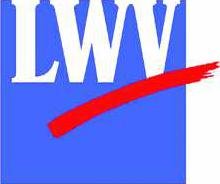The drought monitor report as of Tuesday, Nov. 8, indicates the same drought conditions as last week and the rainfall we received wasn’t enough to change things. We are still in extreme drought and it will take exceptional amounts of precipitation to improve conditions. In this area, we are in extreme drought with exceptional drought inching closer. Exceptional drought is in southern Stafford County and most of Pawnee. If this continues, it will be in Western Barton County next week. For comparison, this is worse than 2012 and it is not even close. The six to ten-day outlook (Nov. 15 to 19) indicates a 91 to 100% chance of below normal temperatures and a chance of normal to slightly below normal precipitation. The precipitation we did receive does help the wheat that’s already emerged hang on and should help the wheat that hasn’t yet merged or sprouted come up. The cold temperatures will slow that down a bit. The eight to 14-day outlook (Nov. 17 to 23) indicates a 60 to 70% chance of continuing below normal temperatures and a 33 to 40% chance of above below normal precipitation. Not what anyone wants to hear.
Today, as we head into the start of the holiday season, many producers are wrapping up field work from harvest to wheat planting and even getting equipment cleaned up and put away for a bit. It’s also the time to start planning and thinking about next year. Today, let’s discuss frugal vs. cheap in agriculture.
Frugal: “thrifty use of nonrenewable resources. Economical, stresses prudent management, lack of wastefulness, and use of things to their best advantage.” Cheap: “unwilling or very hesitant to spend money.” Cheap vs. Frugal: “Cheapness uses price as a bottom line; frugality uses value as a bottom line.” No producer wants to waste money or spend more than they need to. However, the important thing for all of us and especially those in agriculture is to be frugal, not cheap. Being frugal doesn’t mean you don’t spend money but you invest or use it wisely. Being cheap means spending as little as possible. A frugal producer in the long run often ends up spending less money and reaping greater profits in the long run and the cheap producer often ends up wasting money and ends up with lower profits. All of us remember the adage that it takes money to make money. So, let’s discuss a real-world example or two to illustrate the point.
This is a time of year to consider soil sampling, depending where you are, for pH, (P) phosphorus, etc. to determine fertilizer needs for next years crops. Not a huge investment but also not cheap. It’s especially important if you haven’t soil tested for a while or if you had poor crops due to the heat and drought. Skipping the test to save money, yes, some still do. Could cost you more money in the long run. Low pH where you need liming will affect crop growth, nutrient uptake, soil applied herbicide activity and result in lower yields. Many soils still have much of the fertilizer applied for the 2022 cropping year available and need little if any say P. Or your field may be short and you lose yield by not applying enough fertilizer. Next spring, it would be wise to check profile nitrogen levels as there may be significant N left in the soil. N you don’t need to apply. The list of examples could fill several pages of the newspaper.
The point of all this is simply that it pays to be frugal and spend money when needed as it improves the bottom line.
Dr. Victor L. Martin is the agriculture instructor/coordinator for Barton Community College. He can be reached at 620-792-9207, ext. 207, ormartinv@bartonccc.edu.








